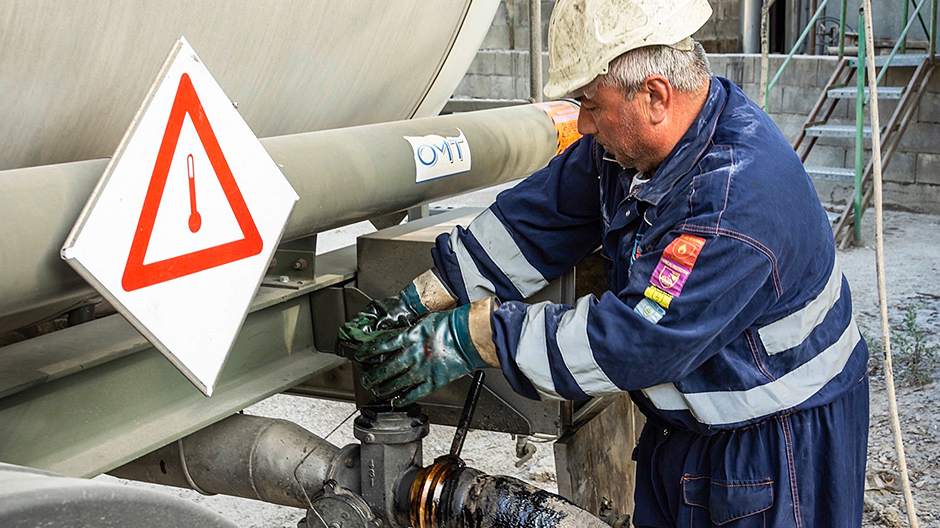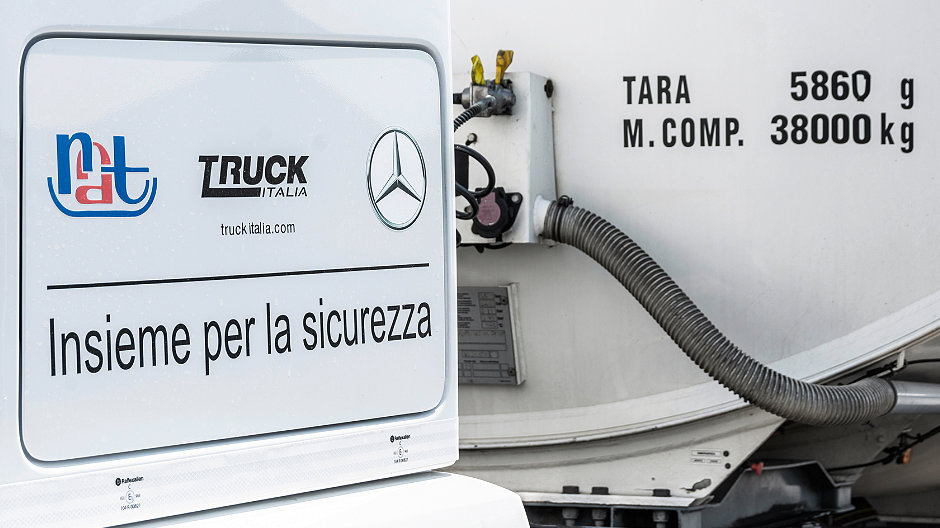
Fuel for Tuscany: the Actros Loader impresses across the board
Economics & Logistics
The Rat consortium was looking for the perfect tractor unit for delivering fuel in Tuscany. After comparing six models in detail, they chose the Actros Loader.

With regard to overall efficiency the Actros Loader is the best truck on the market for the transportation of fuel according to the Rat consortium.
When selling fuel at filling stations every additional litre counts. That is why the kerb weight of the semitrailer combination must be as low as possible. For Raggruppamento Autotrasportatori Toscani (Rat), located in Calenzano, a stone's throw away from Florence, this is an iron rule as the chairman, Gianfranco Bini, explains: “At one time weight was unimportant when choosing vehicles for transporting petroleum products. However, about 20 years ago one of our contractors, an important petroleum company, restructured their sales logistics and decided to transport the greatest possible amount of fuel on each tour in order to optimise routes and costs. The company asked us to use the lightest available tractor units and semitrailers.”
The Rat consortium then carried out a thorough analysis of the relevant models available on the market. The program ended with the purchase of 20 Actros Loaders – the version of the Mercedes flagship designed for the greatest possible payload.
Gianfranco Bini explains: “In August 2017 we decided to replace several tractor units and asked various commercial vehicle manufacturers to provide us with their lightest tractor unit so that we could test them in real working conditions, taking different parameters into account. We then entrusted six different tractor units to one single driver and he used them for typical fuel transportation, always under the same conditions.”




This test took seven months and during that time Rat kept a record in the form of an Excel spread sheet. The results of each model were recorded with regard to weight, fuel consumption, safety, manoeuvrability, performance purchase price and maintenance. “We didn't just want to compare kerb weight, but the overall efficiency and the effects on the driver. And we also took the customer service network in the area we serve into account,” says Bini.
After the information had been evaluated and the results discussed amongst the consortium members, Rat chose the Actros Loader in January 2018. The first vehicles began work in May. “The Loader doesn't just offer a very low kerb weight and low operating costs; it also has the advantage of low cab-entry,” The chairman of the consortium continues. “This means that entering and exiting the vehicle is easier for the driver. The fact that the driver does that around 20 times a day when delivering fuel, needs to be taken into account. Furthermore, the smaller cab makes it much easier to manoeuvre at filling stations that are often located on inner-city roads.”

“We then entrusted six different tractor units to one single driver and he used them for typical fuel transportation, always under the same conditions.”
– Gianfranco Bini, Chairman of Raggruppamento
Autotrasportatori Toscani (Rat)
The issue of safety was also a priority, both with regard to selecting the vehicles and training the drivers. The consortium chose the complete safety equipment for the Actros Loader, including bi-xenon headlamps because, as Bini explains, “the test driver confirmed that these significantly improve visibility compared with conventional headlamps”. Also drivers are given safety training when they are first employed which is then continued on the job. The company also closely monitors whether personnel are carrying out the prescribed measures to prevent accidents correctly.
Rat is a consortium with separately owned property which means that the vehicles belong to the individual partners. A small fleet of 35 different semitrailers is an exception. The consortium bought them for special tasks or to serve as reserve vehicles when the vehicles of the partners are not able to run.
Bini: “Whenever we receive a query for a new order which requires special or expensive equipment, for example, the consortium buys the first vehicles. This was the case when we began to transport jet fuel for two petroleum companies. Rat then bought four special tank wagons which the company gave the partners to use. Once the order was secure and the order volume had begun to grow, the remaining semitrailers were bought by the individual partners.”

Strict regulations govern the transport of fuel – that is why the Actros Loaders at Rat are equipped with all of the important safety equipment.
The Rat corporation was launched in 1963 in Florence as a consortium of several self-employed drivers involved in the sale of fuel which then extended its activities into other areas such as the transport of asphalt and liquid waste which also require tank wagons. “This sector is changing: the sale of conventional fuels is declining whilst the focus on alternative products such as natural gas is increasing,” says Bini with a look at the future of the industry. “We always make sure that we are satisfying the demands of our customers and the form of the consortium allows the partners to do this in a way that is economical in the long-term.”
Photos: Michele Latorre




Comment
Please log in to post a comment.
3 comments
Vermutlich mit weniger systematischem Vergleich: Speziell hier in der Region Südwestdeutschland sieht man auch viele Actros Loader bei Kraftstofftankzügen im Einsatz, weiß man also nicht nur in Italien zu schätzen.
Gruß
Klaus
Vermutlich mit weniger systematischem Vergleich: Speziell hier in der Region Südwestdeutschland sieht man auch viele Actros Loader bei Kraftstofftankzügen im Einsatz, weiß man also nicht nur in Italien zu schätzen.
Gruß
Klaus